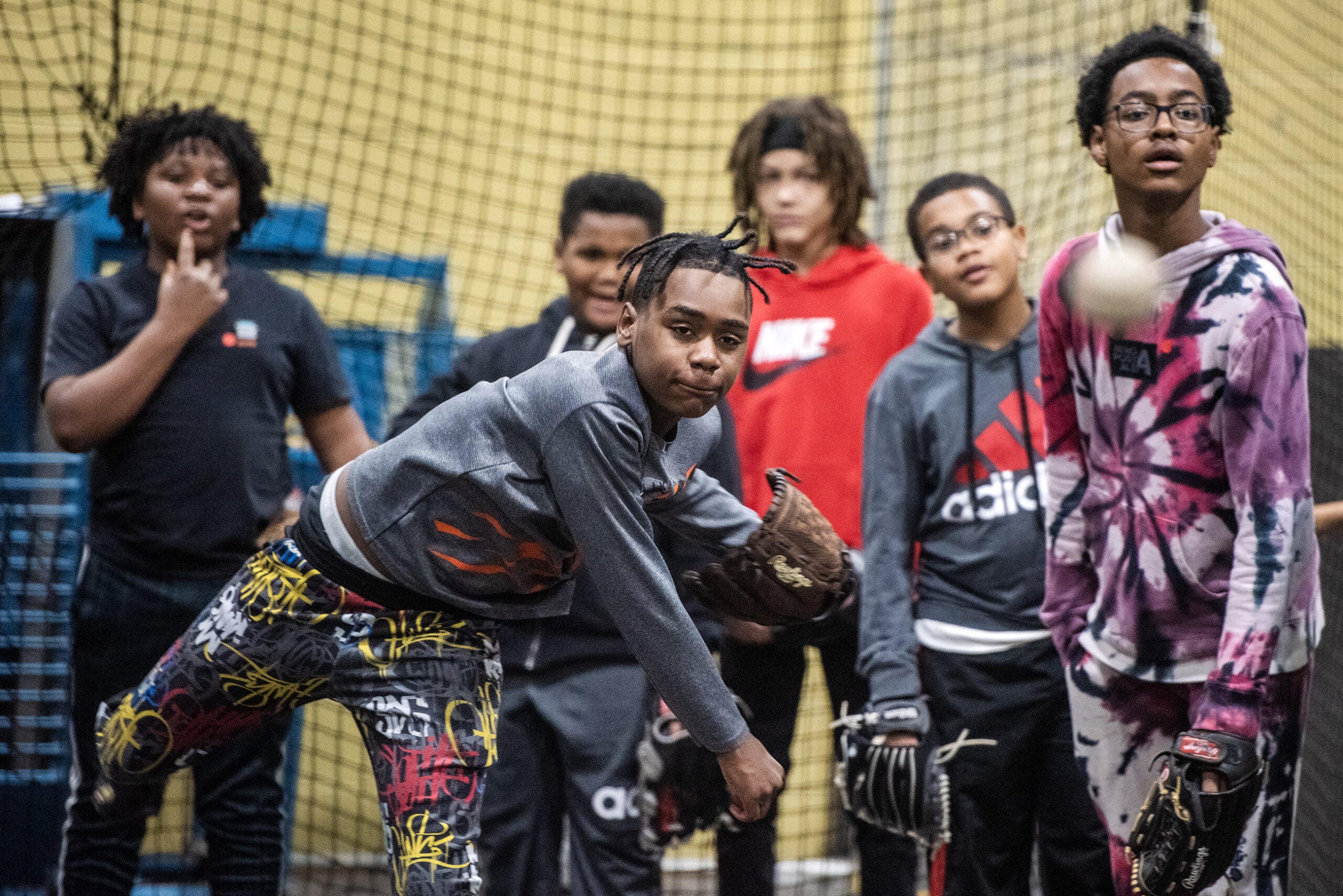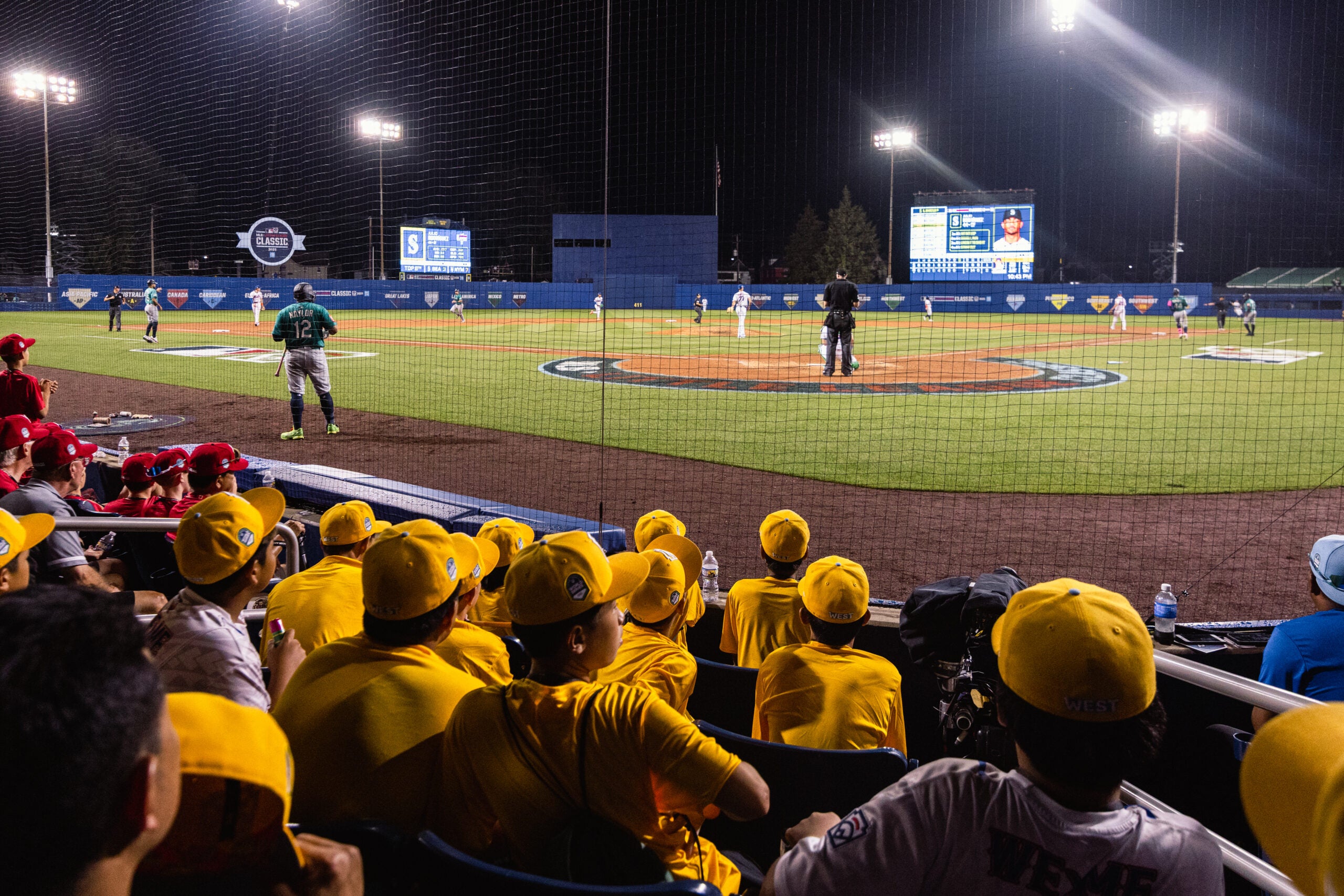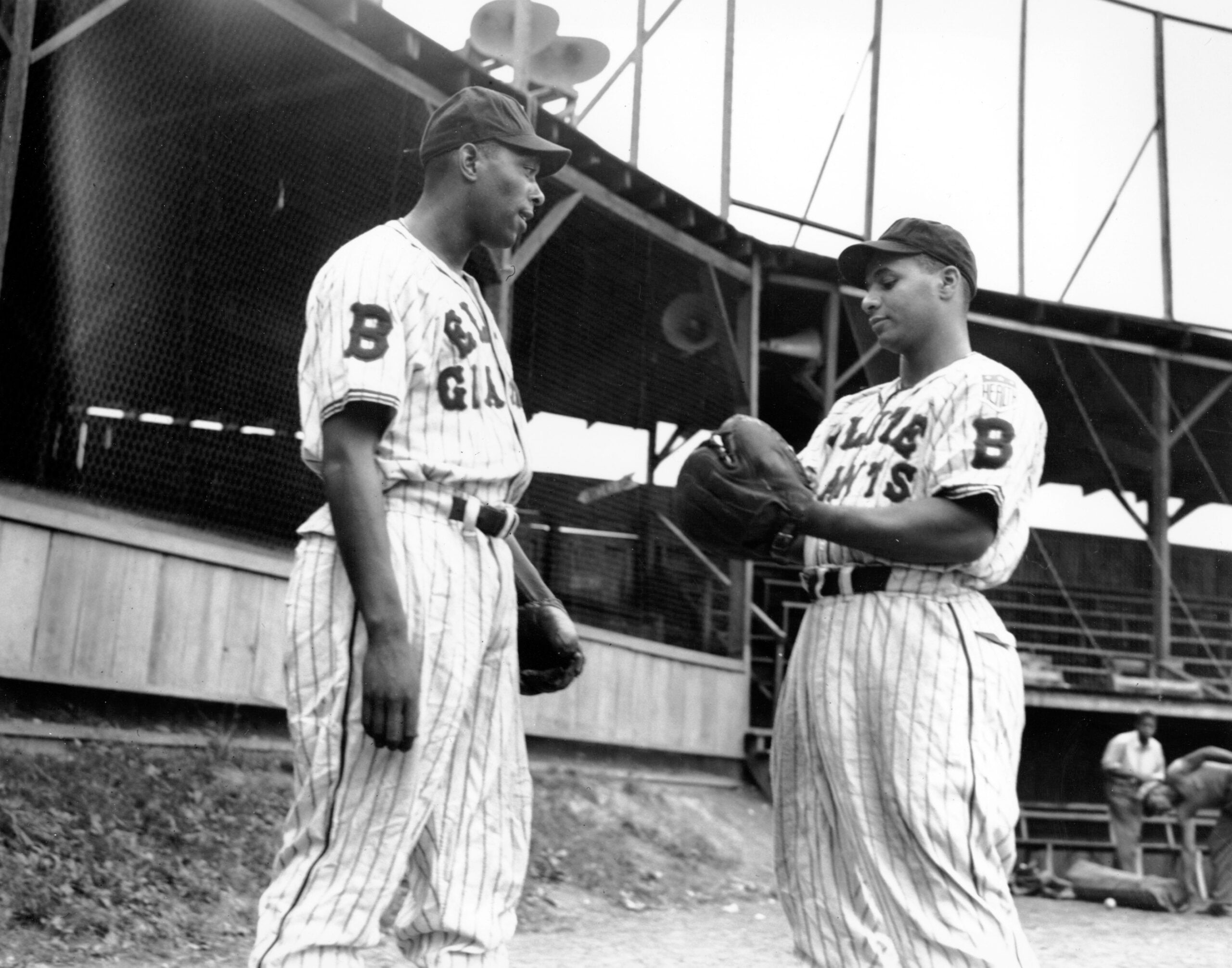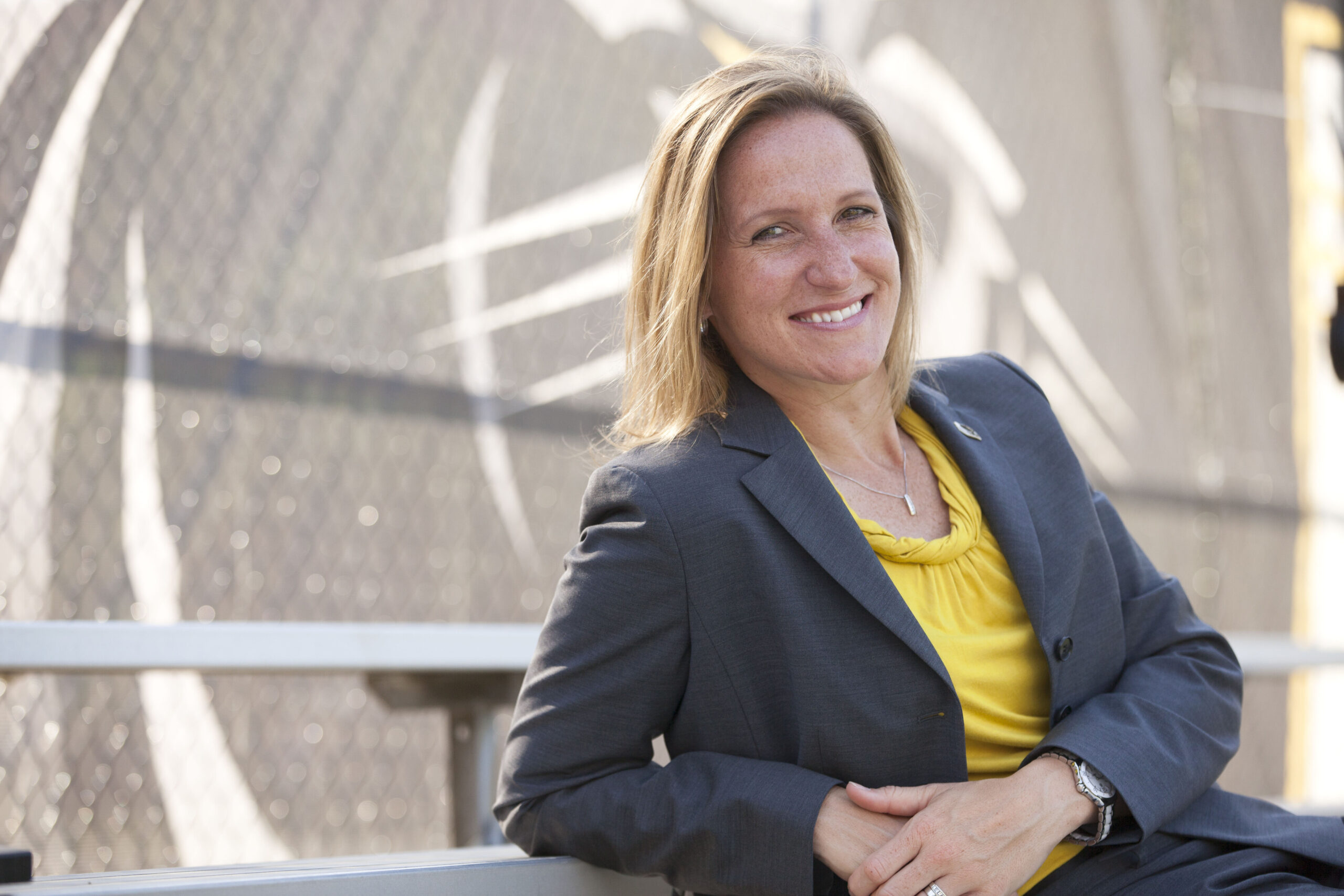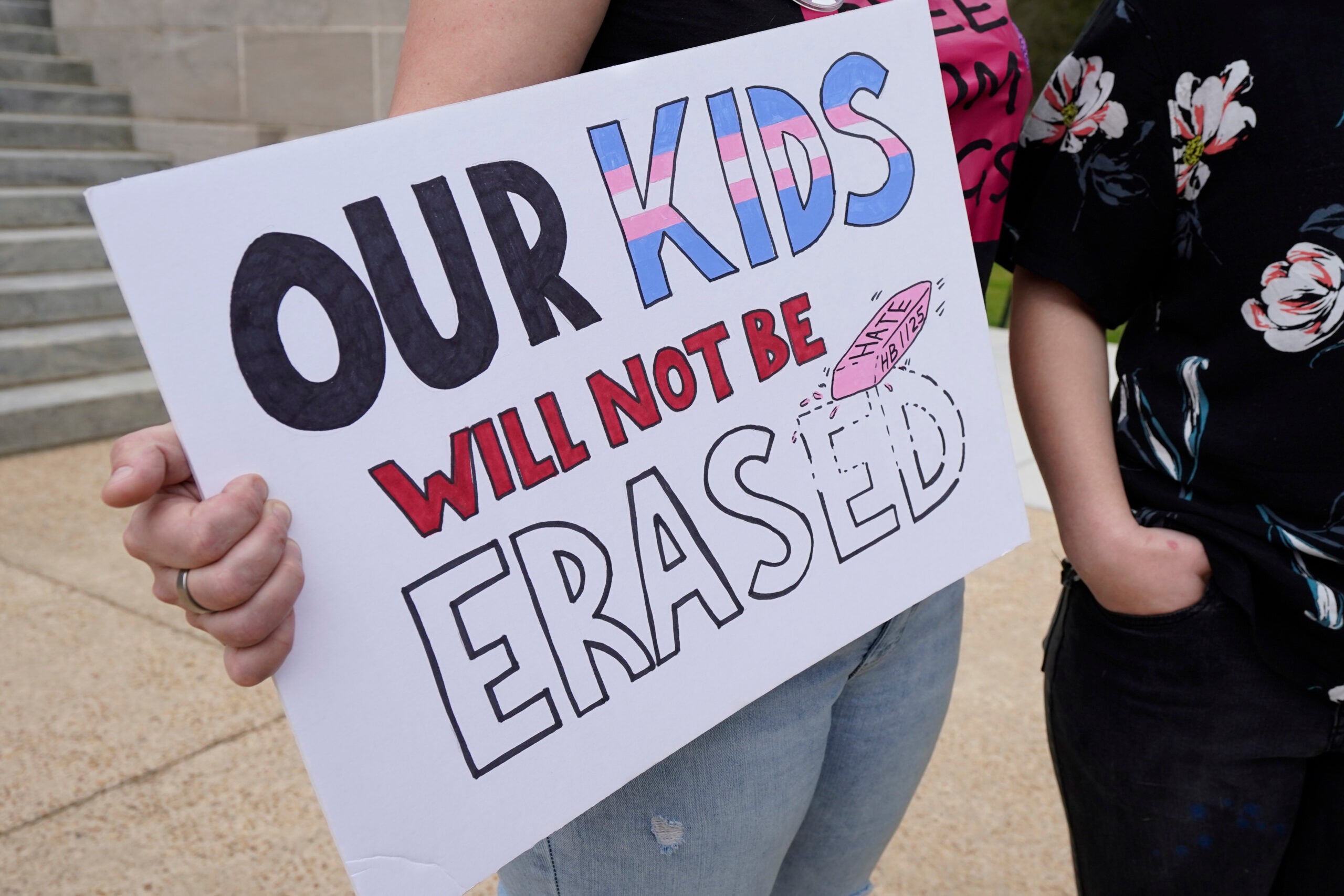The crack of a bat. A ball hitting a glove. The grunt following a pitch to home.
You can hardly hear yourself think inside the indoor practice facility at Milwaukee’s Beckum Stapleton Little League.
But that’s just the way they like it.
News with a little more humanity
WPR’s “Wisconsin Today” newsletter keeps you connected to the state you love without feeling overwhelmed. No paywall. No agenda. No corporate filter.
On a Wednesday night in March, nearly 50 kids are crammed into the facility near downtown Milwaukee, trying out to be on one of the league’s 20 teams.
One of them is Matthew Duncan, whose favorite position to play is catcher. He started playing baseball when he was just 5 years old. He’s now 12, and he considers himself a veteran in the Little League, which serves hundreds of youth on Milwaukee’s North Side.
“I was screwing up, but I didn’t give up and I kept trying and now a couple years later, I’m 12-years-old, and (I) won the championship game and I’m going to the juniors now,” Matthew said, referring to the next age group within the program.
He has high hopes for his future baseball career.
“I plan on making it to the professionals and once I’m out of there, I plan to become a brain surgeon,” he said.
Matthew is one of over 25,000 Milwaukee youth who have played for the league since its inception in 1964. Alumni include prominent lawmakers, teachers, police officers, lawyers and even Devin Harris, a former NBA player.
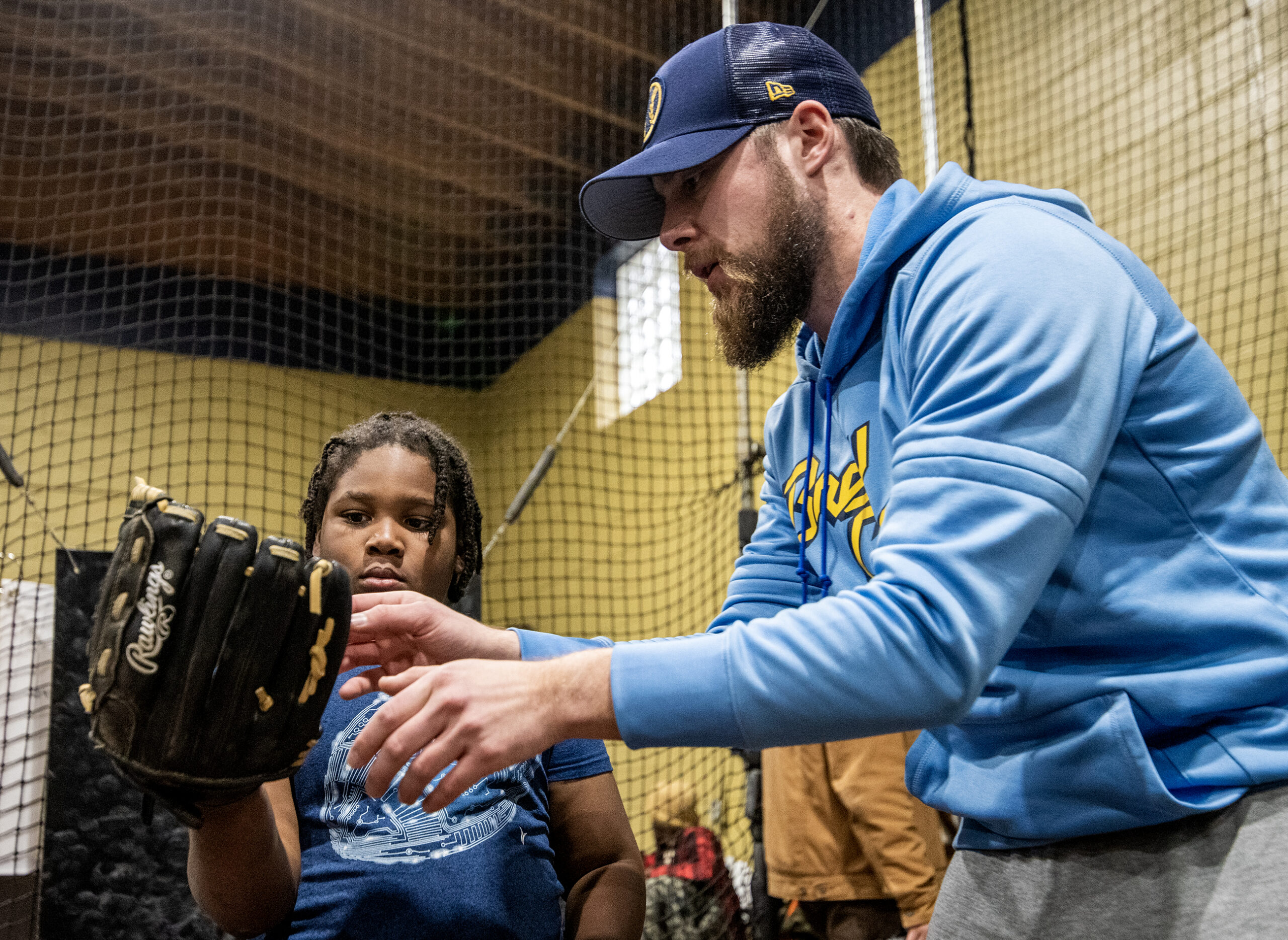
The league is named for James Beckum, one of its founders and a former player for the Negro Leagues. Even today, most of its players are Black. It’s battling two broad trends: a national decline in youth sports participation, and a particular drop in the number of Black youth interested in baseball. The Beckum Stapleton league has funding that ensures all kids who want to participate have a chance, regardless of their ability to pay. And its recent decision to add a girls softball program helped them add about 100 players last year. This season, the league will likely have the most players the league has had in its nearly six-decade history.
Leaders say the program’s deep ties to Milwaukee’s Black community have helped it to succeed where other youth sports programs have struggled.
Many former participants now volunteer for the league, including Matthew’s mother, Tawyana Duncan. She grew up operating the scoreboard during games. As an adult, she’s helped run practices. Now, she’s a coach.
“It’s for a good purpose — I like to see our kids involved in something positive,” Duncan said.
“It teaches them teamwork, it teaches them camaraderie, it teaches them responsibility, it teaches them that you don’t have to be perfect to be successful, that you can be successful with your imperfections,” she added.
Funding inequality has created gaps in youth sports availability
Quentin Prince, an alumni of the Little League himself, is the executive director of the Milwaukee Youth Sports Alliance. His work focuses on ensuring that Milwaukee’s youth have access to high-quality sports programs. He said youth sports have numerous positive benefits for children, like academic success and leadership skills.
“If we can … allow them the opportunity to be engaged in this activity,” Prince said, “we could change the trajectory of so many lives in a positive way.”
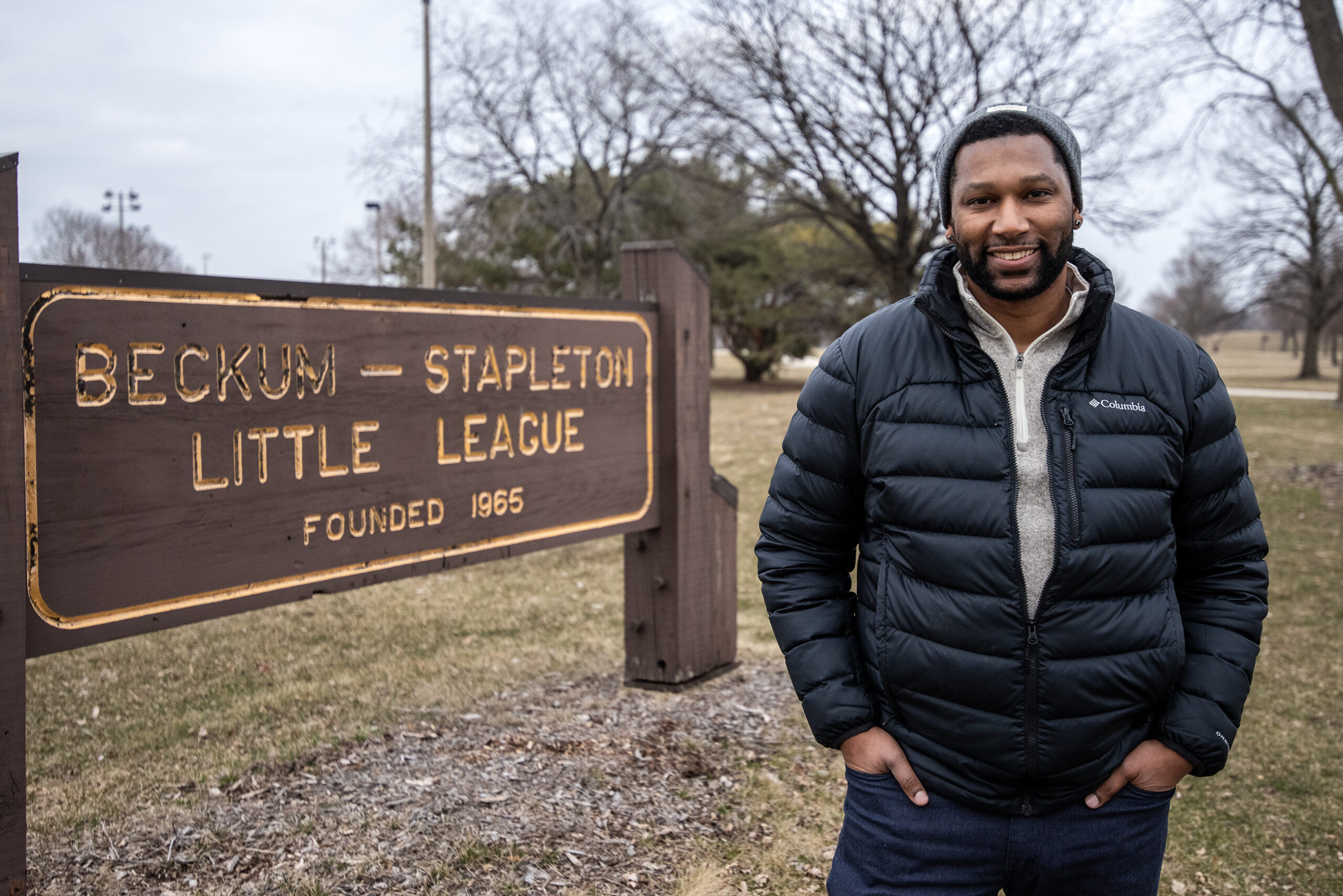
But across the city, opportunities to get involved in youth sports are not distributed equally. Milwaukee is one of the most racially segregated cities in the nation, and the Youth Sports Alliance has highlighted ways that inequality in the city has created barriers for some kids and families that make it harder for them to join teams. Recent studies have examined these barriers — from a lack of funding, to safety and transportation concerns.
The Alliance’s 2021 report found increased privatization of youth sports has resulted in reduced access for low-income families. The report also found some school districts have reduced or eliminated their youth sports programming altogether, and others have had to raise user fees. That can make it harder for low-income families to participate.
“For youth in underserved neighborhoods and those with limited financial resources, access to quality sports programs is limited and participation is trending down,” the Alliance report found.
A 2020 study from Wisconsin Policy Forum on the youth sport landscape in Milwaukee also found that funding, particularly from philanthropic organizations and other non-user sources, is a top challenge. Many youth sports organizations rely on grants or donations, making them vulnerable should those funding sources dry up.
But the Policy Forum report also points to the many benefits of youth sports, including better academic outcomes and a greater aptitude for teamwork, leadership and problem-solving.
Ensuring youth sports thrive in Milwaukee is something Prince has dedicated his life’s work to. Part of that work is making sure community organizations work together.
“And that means youth sports organizations working with corporate foundations, working with the school system across the board,” Prince said. “We need a network of partnerships where people are coming together to support this effort.”
It also includes making sure there are adults, including coaches and referees, who are there to help mentor the youth they serve.
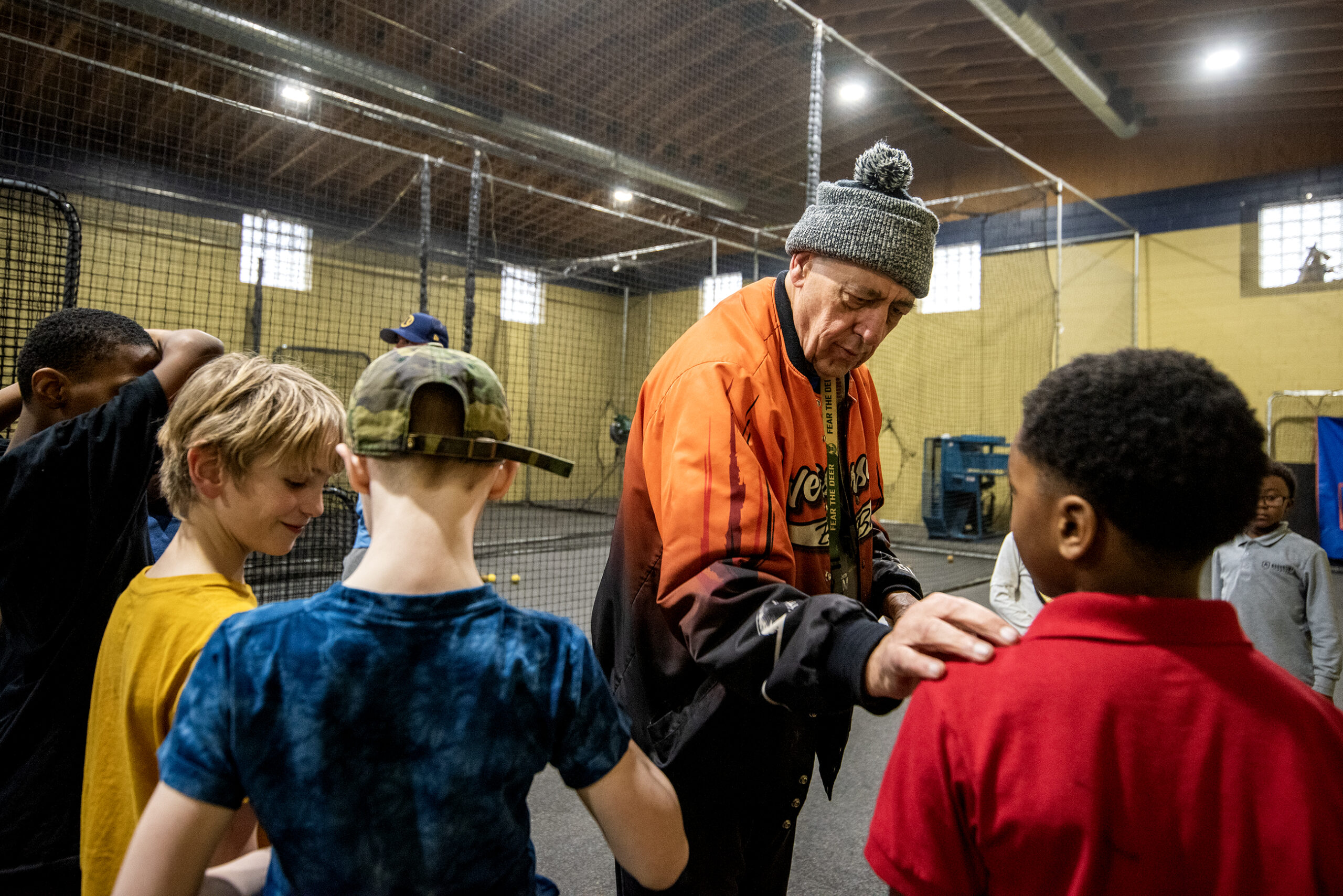
The league has been around for nearly six decades. It was founded in 1963 by the Rev. E.B. Phillips of the Greater Galilee Baptist Church. Phillips asked Beckum, a member of his church and former player for the East St. Louis Giants, and Charles Stapleton to help get children off the street and into a baseball program.
After starting with just four teams in 1964, the league quickly expanded, as more teams were added, playing teams from the Northern suburbs like Greendale and Whitefish Bay. All players in the league now play at Carver Park in Milwaukee. That’s where Jim Brey’s office is located.
Brey started to volunteer with the league after his son started playing at the age of 9, and later became a coach and manager. Soon enough, he was asked to serve on the board. He’s now president of the league for the second time.
Around 200 kids used to participate every year. Last year, that number expanded to over 300, largely because they now offer a softball program for girls.
“It just exploded,” Brey said. “I was pleasantly surprised. … We started with five girls and ended up with five teams.”
The recreational league includes kids from 4 to 16. Tryouts usually begin in March, while games start in May, and the season lasts for eight weeks. Before the first home game every season, a parade featuring all the players and coaches rolls through the streets near the park where the children play.
Much of Brey’s role includes speaking with potential sponsors and helping to raise funds for the program, as some kids aren’t able to buy needed equipment like gloves or cleats. A report from the RAND Corporation found that low-income families and youth play in sports leagues at lesser rates compared to higher earning youth and families.
“Our statement is that anybody who registers will play. And we will work it out, get sponsors, do whatever we can,” Brey said.
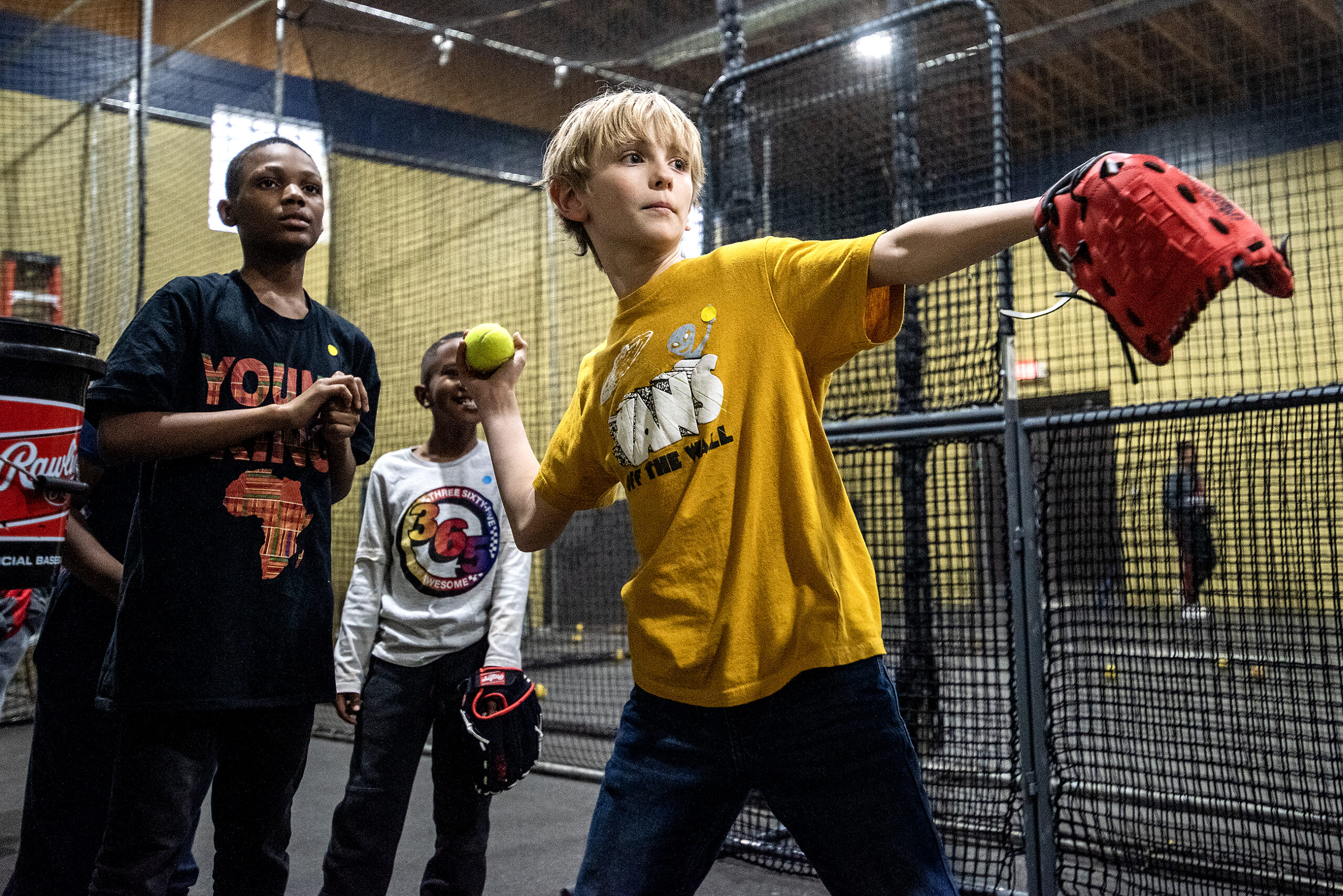
Black role models may help increase youth sports participation
Marcellus Dawson grew up playing in the Beckum Stapleton Little League. During the first few years playing, Prince’s father was his coach.
“I just fell in love with the place — the beautiful fields, the diamonds that we had. I hadn’t seen anything like that before,” Dawson said.
Dawson points to the league as the main reason he’s had continued success throughout his baseball career. In 1999, he became the only Black player ever to win the Wisconsin Baseball Coaches Association’s Player of the Year award. He was even drafted by the Boston Red Sox and San Diego Padres, but decided to play college baseball instead.
“It all started at Beckum,” Dawson said.
Dawson coached baseball at the University School of Milwaukee for several years after he finished playing in the early 2000s. It was there he began to see how important having Black role models can be.
“When it comes to baseball, there are not a lot of Black men or coaches who are able to get out and teach this game the way it should be taught,” Dawson said.
He believes one reason for the decline in baseball participation is that the sport requires more equipment than other sports like basketball, for which only a ball and a hoop are needed.
But representation is also important, said Dawson. In the 2022 MLB World Series, there wasn’t one player of African American heritage who played for either team.
“It’s hard to find that player you can familiarize with and see yourself in the mirror looking like,” he said.
That’s one of his main goals as the founder and director of the youth sports training program FitClubMKE, which focuses on empowering youth in the city through fitness and education. Every kid that signs up for the program gets a new baseball glove.
“That’s how I fell in love with the game. The first glove I had, it did a lot for me,” he said.
In 2002, the league opened its indoor practice facility, the James W. Beckum indoor practice facility, which allowed kids could practice inside during the harsh winter months. That’s where Matthew Duncan was taking at-bats in March.
Matthew now views himself as a veteran in the league and a mentor for other players. He used to struggle, too. He’s looking forward to the start of games in May.
“(I enjoy) teaching new people new skills and teaching them how to correctly play, because now we’re starting to get more and more new people and we’re able to step in and help as veterans of the league … we can come in and help them with troubles as well,” Duncan said.
Meanwhile, Tawyna Duncan said she plans to continue volunteering with the league for years to come.
“When I walk in my neighborhood, there are so many kids that told me that they didn’t think that there was anything that they could do — they didn’t think they could go to college, they didn’t think they could do anything more than what they see in their neighborhood,” she said. “And I told them they have to think outside of the neighborhood. There’s a lot they can do.”
Wisconsin Public Radio, © Copyright 2026, Board of Regents of the University of Wisconsin System and Wisconsin Educational Communications Board.
